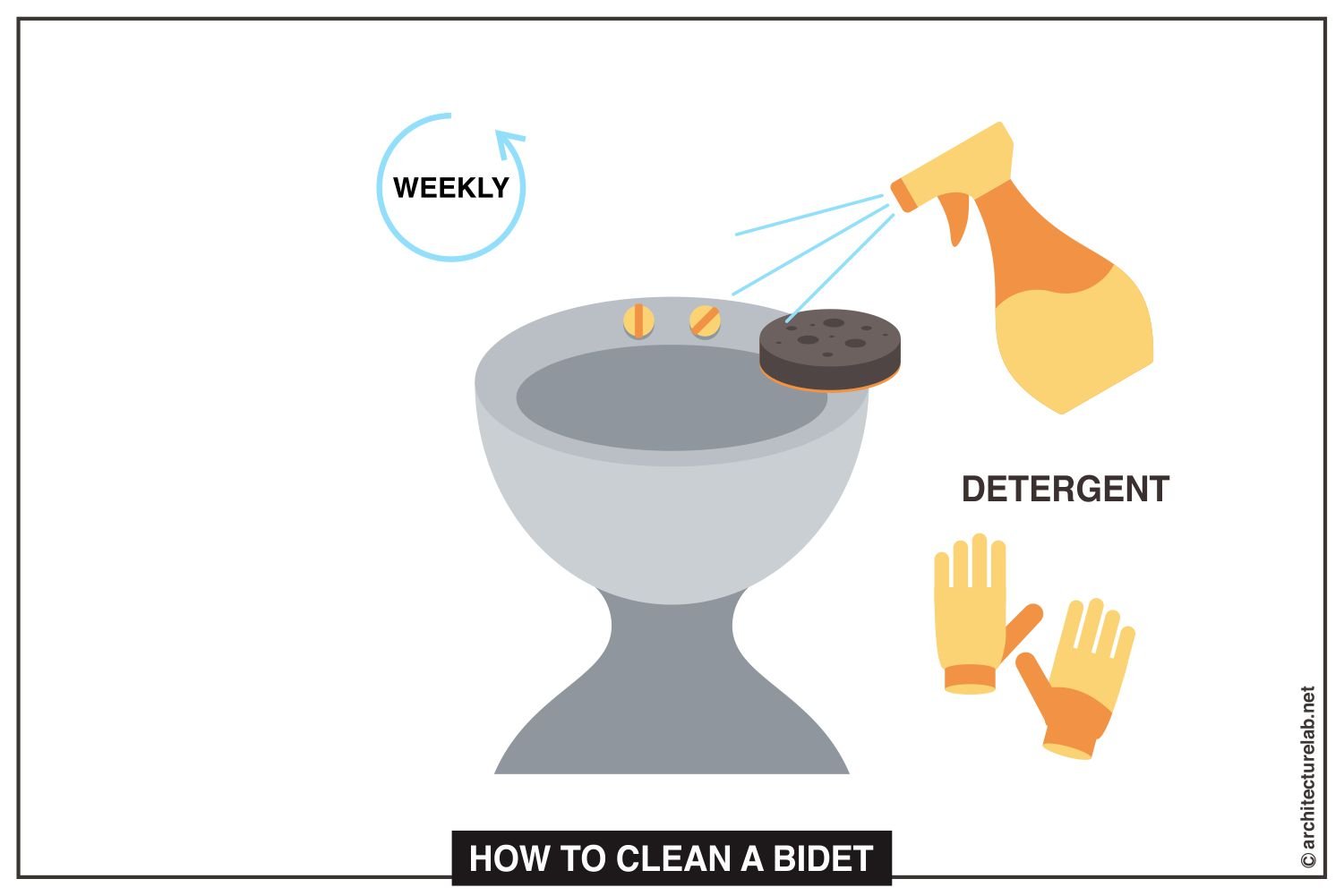A bidet attachment, whether electric or non-electric, is prone to dirt and mineral buildup, just like any other plumbing fixture in your bathroom. But cleaning it the DIY way is not a very complicated task, and we will tell you all about it in the following sections.
How To Clean The Bidet Nozzle?
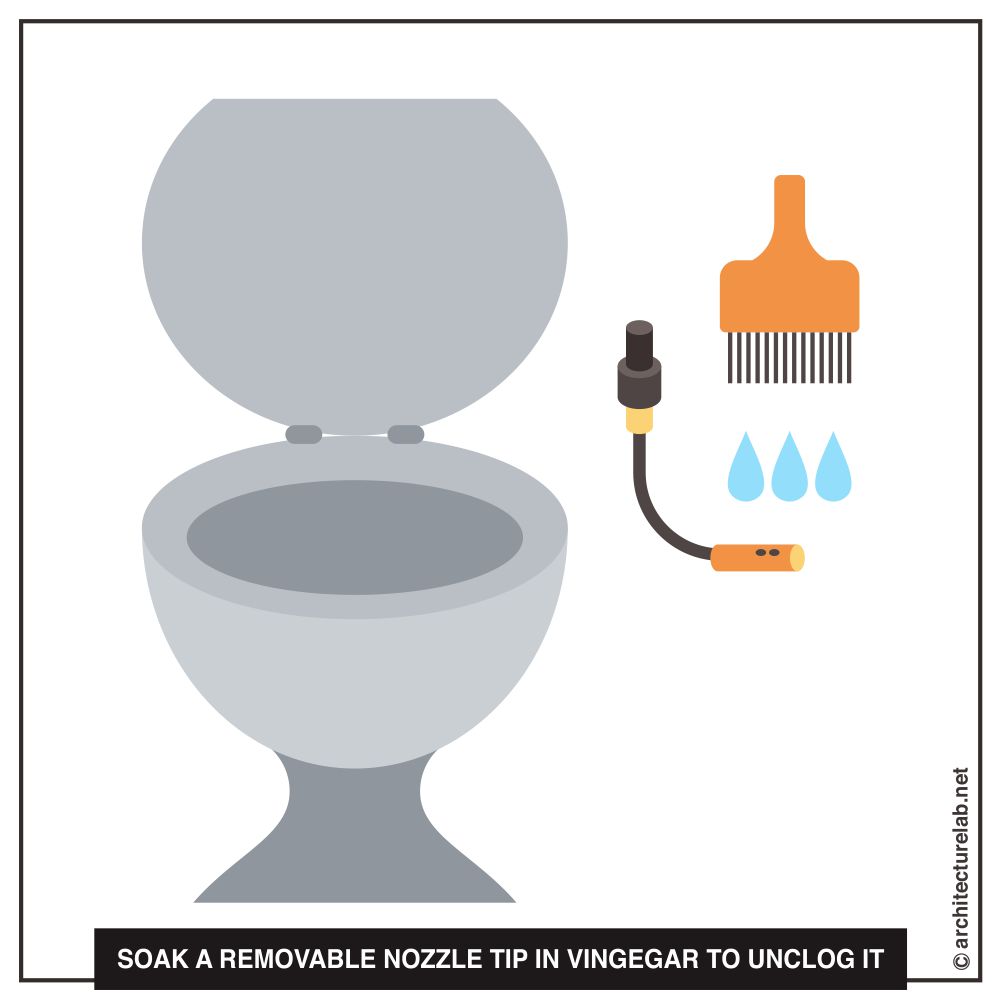
Dirty bidet nozzles can cause reduced water pressure, thereby affecting the overall efficacy of the nozzle. Anything from minerals in hard water to rust or corrosion can block the nozzle to reduce the water pressure, meaning the cleaning process won’t be as effective.
If you have a self-cleaning nozzle, make sure you engage the self-cleaning or self-rinsing feature by twisting the knob in the right direction after every use. This can go a long way in keeping the nozzle clean by reducing or preventing clogs altogether.
However, if the nozzle tip is already dirty or clogged and it’s removable, you can keep it submerged in a water and vinegar solution (in a ratio of 1:1). Then, scrub the tip with a toothbrush and wash it with plain water.
For non-removable nozzles, extend the nozzle head completely and unplug the unit from the water valve or switch off the valve. You may need to twist or wiggle the nozzle head to remove it.
Next, prepare the same vinegar solution in a zip-lock pouch and attach it to the nozzle head by tying it around with a rubber band or string. Make sure the tip is completely submerged for a few hours before scrubbing and washing it.
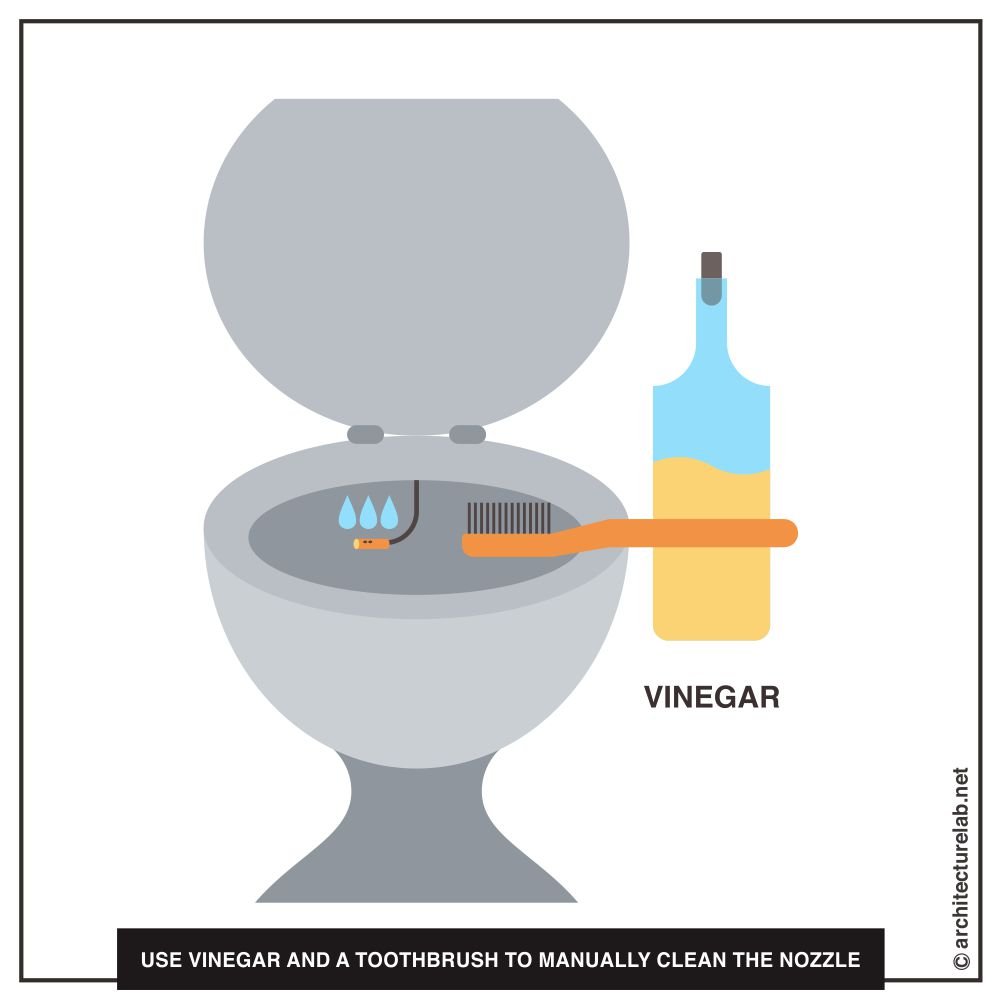
How To Remove The Nozzle Head?
While the exact process may vary according to the bidet model, the general process is to press and hold the bidet nozzle cleaning button for about 3 seconds or until the nozzle detaches. Further, you may be able to remove the nozzle head or tip.
Once cleaned, reattach the nozzle manually and turn on the water valve to check the water pressure. And if you have a handheld bidet with a sprayer, you can unscrew it and soak it in vinegar to clean it.
How To Clean A Bidet Toilet Seat?
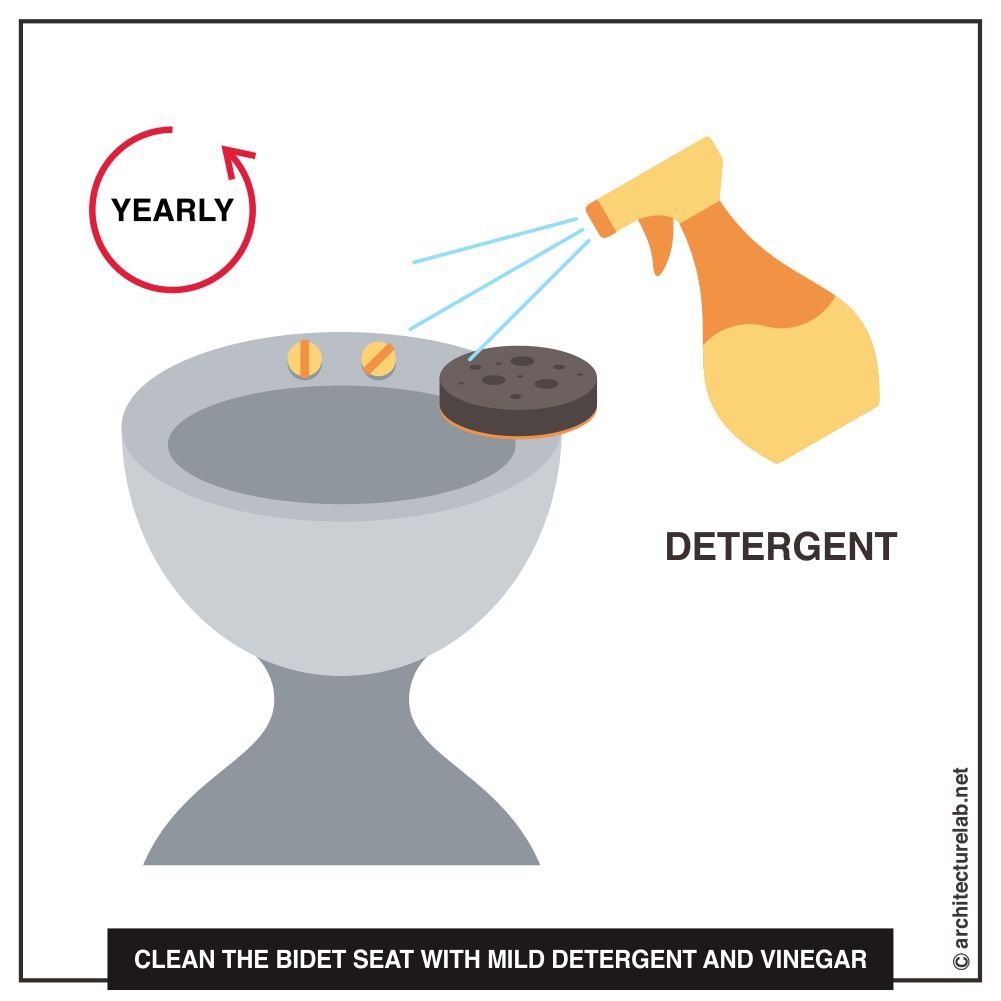
Although bidet toilet seats aren’t really prone to corrosion or rust like the nozzle (or other metal parts) of the bidet, exposure to oil, sweat, and other fluids can make them dirty. You may observe stains or an oily, slimy layer on the bidet toilet seats if they become too dirty.
In such cases, squirt some vinegar, a gentle household liquid cleaner, a gentle cleanser, or a mild detergent (like dish soap) on a clean and soft cloth or paper towel to dampen it. Wipe the seat with a damp cloth or paper towel and leave it to air dry if you’re using vinegar. However, you will need to wash the bidet toilet seat if you’re using detergent.
Tip
You can keep a mild cleanser close to the toilet in your bathroom, which will serve as a reminder to clean the bidet seat regularly. And don’t forget to wear gloves while cleaning it.
Further, you can lift the bidet toilet seat to clean underneath it by pressing the button on the side near the electric cord (in case of an electric bidet attachment) and pulling the seat. If there’s no button, pull the seat gently to remove it and pour some mild detergent underneath.
Depending on how much dirt has accumulated, you may need to keep the detergent for a couple of hours before scrubbing the surface, washing it and putting it back on.
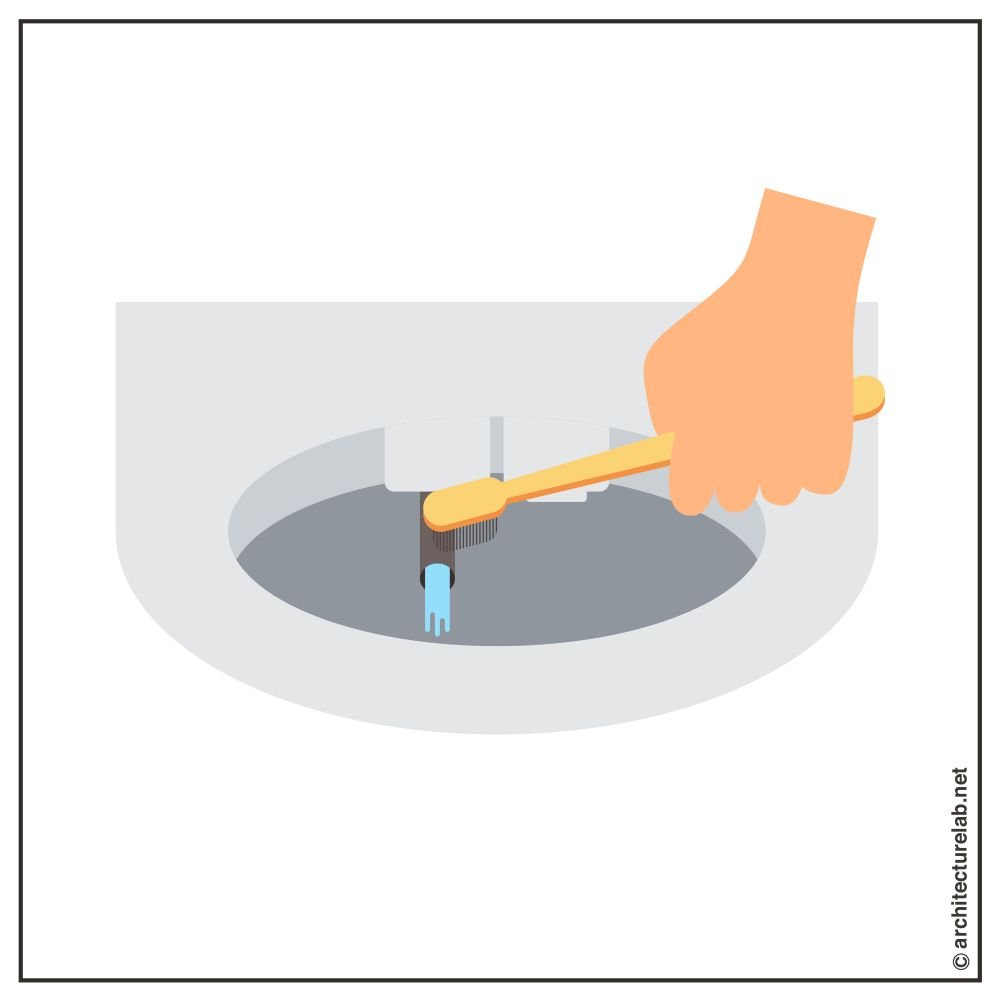
How To Clean The Other Parts Of A Bidet Attachment?
Depending on the type of bidet (electric or non-electronic) and its model, your bidet attachment may have different parts that require cleaning. However, here are some other common components (aside from bidet seats) that should be cleaned regularly:
1. Carbon Air Deodorizer
Many high-end electric bidets come with a carbon air deodorizer that helps remove odor from the air. But unlike an air freshener that eliminates odor with a fragrance, deodorizers pull air from the toilet bowl and run it through a carbon filter screen before releasing it back to remove the odor.
As such, the deodorizer requires regular cleaning for the screen filter to function effectively. Simply remove it from the toilet, rinse and scrub gently with a toothbrush and air dry it. Then, put it back in.
2. Bidet Strainer
Most bidet seats that require electricity have a strainer (mesh filter) installed between the inlet and the hose that prevents mineral deposits from the water supply. And this strainer should be cleaned at least once in 6 months or even more frequently depending on the water condition of your area.
Start by turning off the water supply and unplugging the bidet, as well as emptying the toilet tank. Then, remove the bidet seat and disconnect the hose. You may need to place a bucket or cloth to catch any leftover water.
Carefully pull out the strainer from the inlet with a needle-nose plier and wash it with water. You can also scrub it gently with a toothbrush to remove any debris. Finally, air dry the inlet, put it back in and re-install the seat. Turn on the water supply and electricity.
Keep in mind, though, that different seats and bidet attachments may have different cleaning techniques. We suggest going through the instructions manual to get a better idea about how to manually clean the parts of the specific model in question.
Can You Use Acidic Chemicals To Clean Bidets?
Any chemical substance like hydrochloric acid and bleach can damage parts made of plastic, ceramic, metal, or natural rubber, which is why they should be avoided for cleaning bidets. Even your regular toilet cleaner (like Windex or Benzene) may contain harsh chemicals like ammonia, which can damage the bidet and its parts.
As such, you should stick to using gentle cleansers for the purpose.
What Are Some Effective Ways To Clean Your Bidet After Every Use?
A deep clean may not be possible after every use, but there are a few simple things you can do to keep your bidet clean on a regular basis, like:
- Using the self-cleaning feature after every use
- Cleaning dust or debris from the surface of the bidet attachment with a cloth
- Cleaning any visible parts, crevices, and the control panel or remote control regularly with a dry cloth
Should You Shut Off The Water Valve For Cleaning The Bidet?
Turning off the water line connected to the bidet is an important step if you’re deep cleaning the bidet by dismantling it. However, this isn’t necessary if you’re just cleaning it to get rid of any loose dust or debris. But be careful not to engage the button or handle on the bidet, as this will lead to water wastage.
Final Words
Most high-quality bidets are built to last for 5 to 10 years, but their usage and the water condition of your area play a crucial role in determining their longevity. So, if you see that regular cleaning doesn’t improve the efficacy of the bidet or its parts, like the nozzle and strainer, it may be time to replace the parts or replace the hose connecting it to the water line.
You can also check out our guide on “how do you dry after using a bidet” if you need more info on making use of this bathroom fixture.



